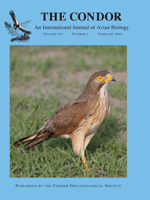Estimates of survival of nearctic—neotropic migrants have broadened our understanding of lifehistory variation across taxa and latitudes. Despite the importance of assessing migrants' survival through all phases of their life-cycle, data from their tropical winter ranges are few. In this study we used 14 years of data on captured birds to quantify the influence of mass on the annual survival of the Prothonotary Warbler (Protonotaria citrea) in northeastern Costa Rica and compared our results to survival estimates generated from the breeding grounds. Furthermore, from estimates of population growth (λ) based on marked individuals, we projected the Prothonotary Warbler's demographic trajectory at our study site. Our results suggest that heavier individuals had higher rates of annual survival. Population growth at our study sites was stable, punctuated by swings in growth and decline. We believe the benefits of weight gain (preparation for migration and intraspecific competition for territories) outweigh inherent costs (greater susceptibility to predation).
How to translate text using browser tools
1 February 2013
Greater Mass Increases Annual Survival of Prothonotary Warblers Wintering in Northeastern Costa Rica
Jared D. Wolfe,
Matthew D. Johnson,
C. John Ralph
ACCESS THE FULL ARTICLE

The Condor
Vol. 115 • No. 1
February 2013
Vol. 115 • No. 1
February 2013
Costa Rica
mass
migrant
over-winter.
POPULATION GROWTH
survival




